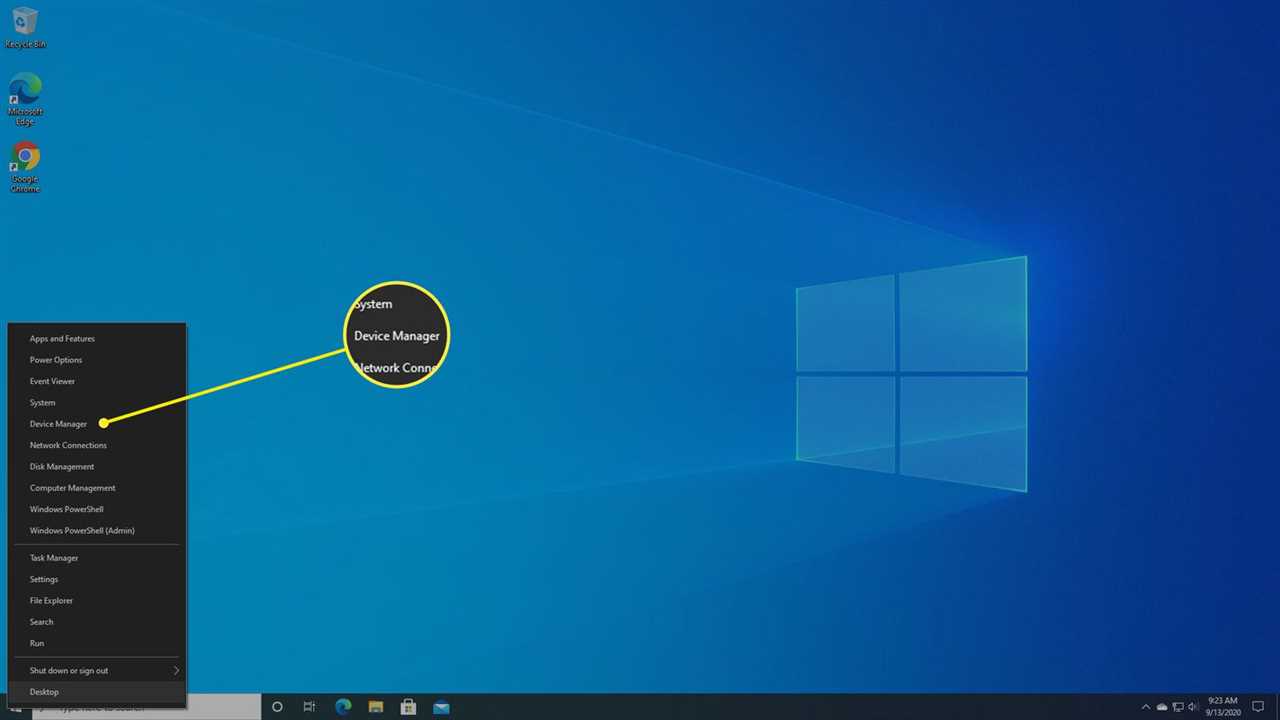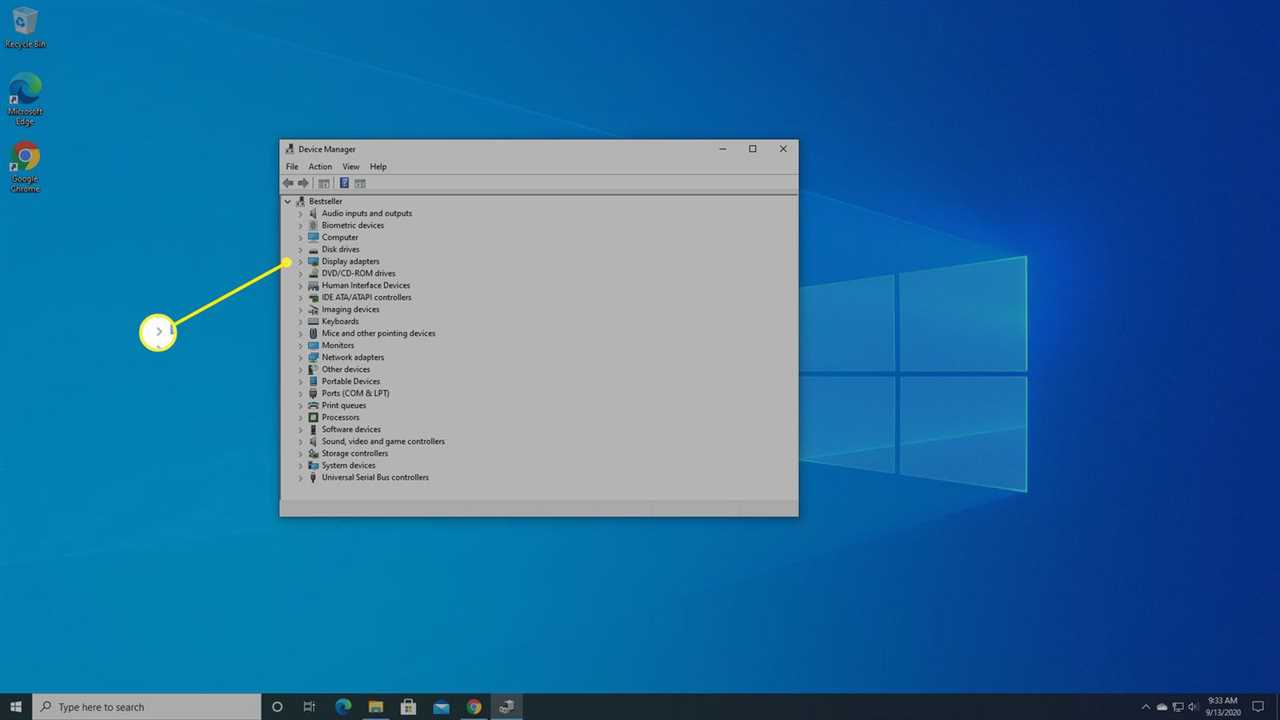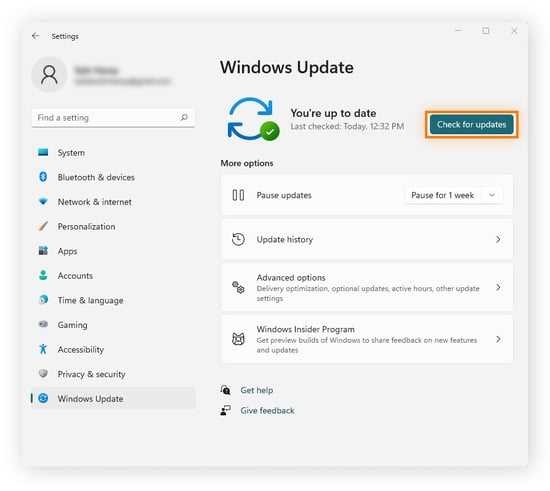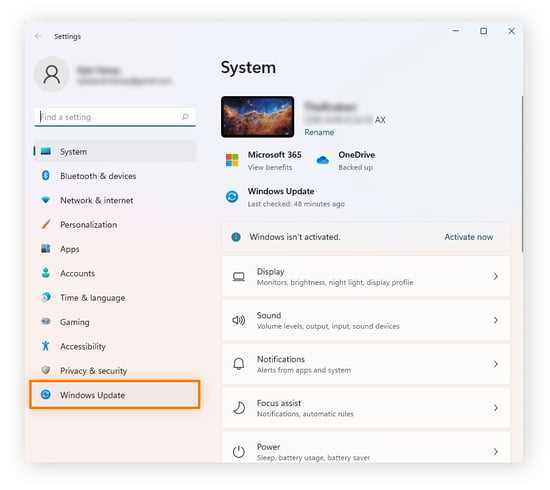
Are you experiencing slow performance or graphical glitches on your computer? It might be time to update your graphics driver. Updating your graphics driver is an essential step to ensure that your computer can handle the latest games, applications, and multimedia content. In this step-by-step guide, we will show you how to update your graphics driver and get the most out of your computer’s graphics capabilities.
Firstly, it’s important to understand what a graphics driver is and why it needs to be updated. A graphics driver is a software program that allows your computer to communicate with and control the graphics hardware, such as the graphics card or integrated graphics chip. By updating the graphics driver, you can improve the performance, stability, and compatibility of your graphics hardware, ensuring that it can handle the latest software and games.
So, how do you update your graphics driver? The first step is to identify the make and model of your graphics hardware. You can do this by opening the Device Manager on your computer and expanding the “Display adapters” category. Once you have identified the make and model, you can visit the manufacturer’s website to download the latest driver for your graphics hardware. It’s important to download the correct driver for your specific hardware and operating system to ensure compatibility.
After downloading the driver, you can proceed to install it. Most driver installations come with a setup wizard that will guide you through the installation process. Simply follow the on-screen instructions, and the wizard will install the new driver for you. Once the installation is complete, it’s recommended to restart your computer to apply the changes. After restarting, you can verify that the new driver is installed by checking the Device Manager again.
In conclusion, updating your graphics driver is a crucial step to ensure optimal performance and compatibility on your computer. By following this step-by-step guide, you can easily update your graphics driver and enjoy the latest software and games without any graphical issues. Remember to always download the correct driver for your specific hardware and operating system, and don’t forget to restart your computer after installation. Now you’re ready to take full advantage of your computer’s graphics capabilities!
Why Should You Update Your Graphics Driver?

Updating your graphics driver is essential for optimal performance and compatibility with the latest software and games. Here are a few reasons why you should regularly update your graphics driver:
- Improved Performance: Updating your graphics driver can significantly improve the performance of your computer, especially when it comes to graphics-intensive tasks like gaming or video editing. New driver updates often include performance optimizations and bug fixes that can enhance the overall speed and responsiveness of your system.
- Compatibility: Software developers frequently release updates that require the latest graphics driver to function properly. By keeping your graphics driver up to date, you ensure that your computer can run the latest software without any compatibility issues. This is particularly important for gamers who want to play the newest games with the best graphics and features.
- Bug Fixes and Stability: Outdated graphics drivers can sometimes cause system crashes, freezes, or other stability issues. Driver updates often include bug fixes and stability improvements that can resolve these issues and provide a smoother and more reliable computing experience.
- Security: Like any software, graphics drivers can have vulnerabilities that malicious actors can exploit. By updating your graphics driver, you can ensure that you have the latest security patches and protect your system from potential threats.
Overall, regularly updating your graphics driver is crucial for maximizing the performance, compatibility, stability, and security of your computer. It is a simple and effective way to ensure that you can enjoy the latest software and games without any issues.
Improved Performance

Updating your graphics driver can significantly improve the performance of your computer. Outdated drivers can cause lagging, freezing, and other performance issues. By keeping your graphics driver up to date, you ensure that your system is running smoothly and efficiently.
When you update your graphics driver, you allow your computer to take advantage of the latest optimizations and bug fixes. This means that your games and other graphics-intensive applications will run faster and smoother. You may also notice improved image quality and better overall visual experience.
Updating your graphics driver is a simple process that can be done in a few easy steps. By following the instructions in this guide, you can ensure that your graphics driver is always up to date and that you are getting the best performance out of your computer.
Bug Fixes and Stability

Updating your graphics driver is crucial to ensure optimal performance and compatibility with the latest software and games. However, it’s not just about getting the latest features and improvements. Updating your graphics driver also brings bug fixes and stability enhancements.
Graphics drivers are constantly being updated to address various issues that users may encounter. These bugs can range from minor visual glitches to more serious crashes or compatibility problems. By keeping your graphics driver up to date, you can ensure that these bugs are fixed and that your system runs smoothly.
Stability is another important aspect of updating your graphics driver. Outdated drivers can cause system instability, leading to frequent crashes or freezes. By updating your graphics driver, you can improve system stability and reduce the likelihood of encountering these issues.
Furthermore, updating your graphics driver can also improve the overall performance of your system. Newer drivers often come with optimizations that can enhance the performance of your graphics card, allowing you to enjoy smoother gameplay and faster rendering times.
So, if you’re wondering how to update your graphics driver, it’s not just about getting the latest features. It’s also about ensuring bug fixes, stability, and improved performance. Make sure to regularly check for driver updates and install them to keep your system running at its best.
Compatibility with New Software

When it comes to updating your graphics driver, it’s important to consider compatibility with new software. As technology advances, software developers often release updates that require the latest graphics driver to run smoothly. If you’re experiencing issues with a new software program or game, it may be due to an outdated graphics driver.
Updating your graphics driver ensures that you have the necessary components to support the latest software releases. This can improve performance, fix bugs, and enhance overall compatibility. Without a compatible graphics driver, you may encounter issues such as graphical glitches, crashes, or even the inability to run certain programs.
To ensure compatibility with new software, it’s recommended to regularly check for updates to your graphics driver. Most graphics card manufacturers provide software utilities that can automatically detect and install the latest driver for your specific model. Alternatively, you can visit the manufacturer’s website and manually download the latest driver.
Remember, keeping your graphics driver up to date is essential for a smooth and enjoyable computing experience. Take the time to update your graphics driver regularly, and you’ll be able to take full advantage of the latest software releases without any compatibility issues.
Checking Your Current Graphics Driver Version

Before you update your graphics driver, it’s important to know which version you currently have installed on your computer. Here’s how you can check:
- Open the Start menu and type “Device Manager” in the search bar. Click on the Device Manager app that appears in the search results.
- In the Device Manager window, expand the “Display adapters” category by clicking on the arrow next to it.
- You will see the name of your graphics card listed under the “Display adapters” category. Right-click on it and select “Properties”.
- In the Properties window, go to the “Driver” tab. Here, you will find information about your current graphics driver version, including the date and version number.
Make a note of your current graphics driver version so that you can compare it with the latest version available for update. This will help you determine if you need to update your graphics driver and how to proceed with the update process.
Windows

To update your graphics driver on Windows, follow these steps:
- Open the Start menu and type “Device Manager” in the search bar.
- Click on the “Device Manager” option that appears in the search results.
- In the Device Manager window, expand the “Display adapters” category.
- Right-click on your graphics driver and select “Update driver”.
- Choose the option to search automatically for updated driver software.
- Windows will search for the latest driver for your graphics card and install it if available.
- Follow any additional prompts or instructions that may appear during the installation process.
- Once the driver update is complete, restart your computer to apply the changes.
Updating your graphics driver can help improve performance, fix compatibility issues, and ensure you have access to the latest features and optimizations. It is recommended to regularly check for driver updates to keep your system running smoothly.
Mac

Updating the graphics driver on a Mac is a straightforward process. Here’s how to do it:
1. Open the Apple menu and click on “System Preferences”.
2. In the System Preferences window, click on “Software Update”.
3. If there is an update available for your graphics driver, it will be listed in the Software Update window. Click on “Update” to start the installation process.
4. Follow the on-screen instructions to complete the installation. Your Mac may need to restart after the update is finished.
5. Once your Mac has restarted, go back to the System Preferences window and click on “Displays”.
6. In the Displays window, click on the “Display” tab and then click on the “Color” tab.
7. Under the “Color” tab, click on the “Calibrate” button to open the Display Calibrator Assistant.
8. Follow the prompts in the Display Calibrator Assistant to calibrate your display settings.
9. After calibrating your display, your graphics driver update is complete. You can now enjoy improved graphics performance on your Mac.
| Step | Description |
|---|---|
| 1 | Open the Apple menu and click on “System Preferences”. |
| 2 | In the System Preferences window, click on “Software Update”. |
| 3 | If there is an update available for your graphics driver, it will be listed in the Software Update window. Click on “Update” to start the installation process. |
| 4 | Follow the on-screen instructions to complete the installation. Your Mac may need to restart after the update is finished. |
| 5 | Once your Mac has restarted, go back to the System Preferences window and click on “Displays”. |
| 6 | In the Displays window, click on the “Display” tab and then click on the “Color” tab. |
| 7 | Under the “Color” tab, click on the “Calibrate” button to open the Display Calibrator Assistant. |
| 8 | Follow the prompts in the Display Calibrator Assistant to calibrate your display settings. |
| 9 | After calibrating your display, your graphics driver update is complete. You can now enjoy improved graphics performance on your Mac. |
Downloading the Latest Graphics Driver

To update your graphics driver, you will need to download the latest version from the manufacturer’s website. Here is a step-by-step guide on how to do it:
Step 1: Identify your graphics card model. You can do this by opening the Device Manager on your computer. Right-click on the Start button and select “Device Manager.” In the Device Manager window, expand the “Display adapters” category to see the name of your graphics card.
Step 2: Visit the manufacturer’s website. Once you know the model of your graphics card, go to the manufacturer’s website. Most manufacturers have a support or downloads section where you can find the latest drivers for your specific model.
Step 3: Find the driver download page. Navigate to the driver download page on the manufacturer’s website. Look for a section that is specifically for graphics drivers or drivers for your specific model.
Step 4: Locate the latest driver. On the driver download page, you will see a list of available drivers. Look for the latest version that is compatible with your operating system. Make sure to download the correct driver for your graphics card model and operating system.
Step 5: Download the driver. Click on the download link for the driver you want to download. The file will usually be in a compressed format, such as a ZIP file. Save the file to a location on your computer where you can easily find it.
Step 6: Extract the driver files. If the driver file is in a compressed format, you will need to extract the files before you can install the driver. Right-click on the downloaded file and select “Extract All.” Choose a location to extract the files to.
Step 7: Install the driver. Once the driver files are extracted, you can proceed with the installation. Double-click on the extracted files to run the installer. Follow the on-screen instructions to complete the installation process.
Step 8: Restart your computer. After the driver installation is complete, it is recommended to restart your computer. This will ensure that the new driver is properly loaded and functioning.
By following these steps, you can easily download and install the latest graphics driver for your system. Updating your graphics driver can improve performance, fix bugs, and add new features to your graphics card.
Visit the Manufacturer’s Website

To update your graphics driver, you will need to visit the manufacturer’s website. This is the best place to find the most up-to-date driver for your graphics card.
Start by opening your web browser and navigating to the manufacturer’s website. Once there, look for a section or page dedicated to drivers or support. This is where you will find the necessary information and files to update your graphics driver.
Make sure you know the make and model of your graphics card before proceeding. This information can usually be found in the device manager on your computer. Once you have this information, you can search for the specific driver for your card.
Once you have located the driver download page, look for the most recent version of the driver. Download the driver to your computer and save it in a location that you can easily access, such as your desktop or downloads folder.
Before installing the new driver, it is recommended to uninstall the old driver from your computer. This can be done through the device manager or by using a driver uninstaller tool. Once the old driver is uninstalled, you can proceed with installing the new driver.
Follow the instructions provided by the manufacturer to install the new driver. This may involve running an installer file or manually updating the driver through the device manager. Make sure to restart your computer after the installation is complete to ensure that the changes take effect.
By visiting the manufacturer’s website, you can ensure that you have the most up-to-date driver for your graphics card. This will help to improve performance and compatibility with the latest software and games.

